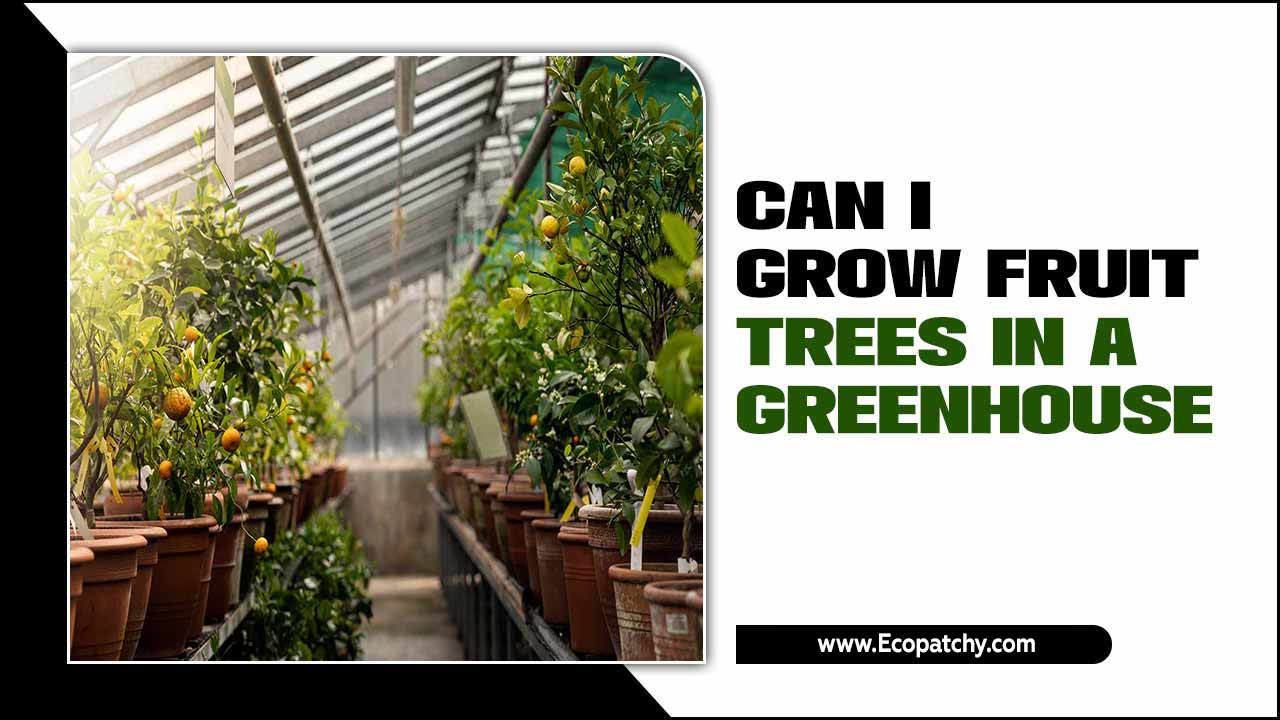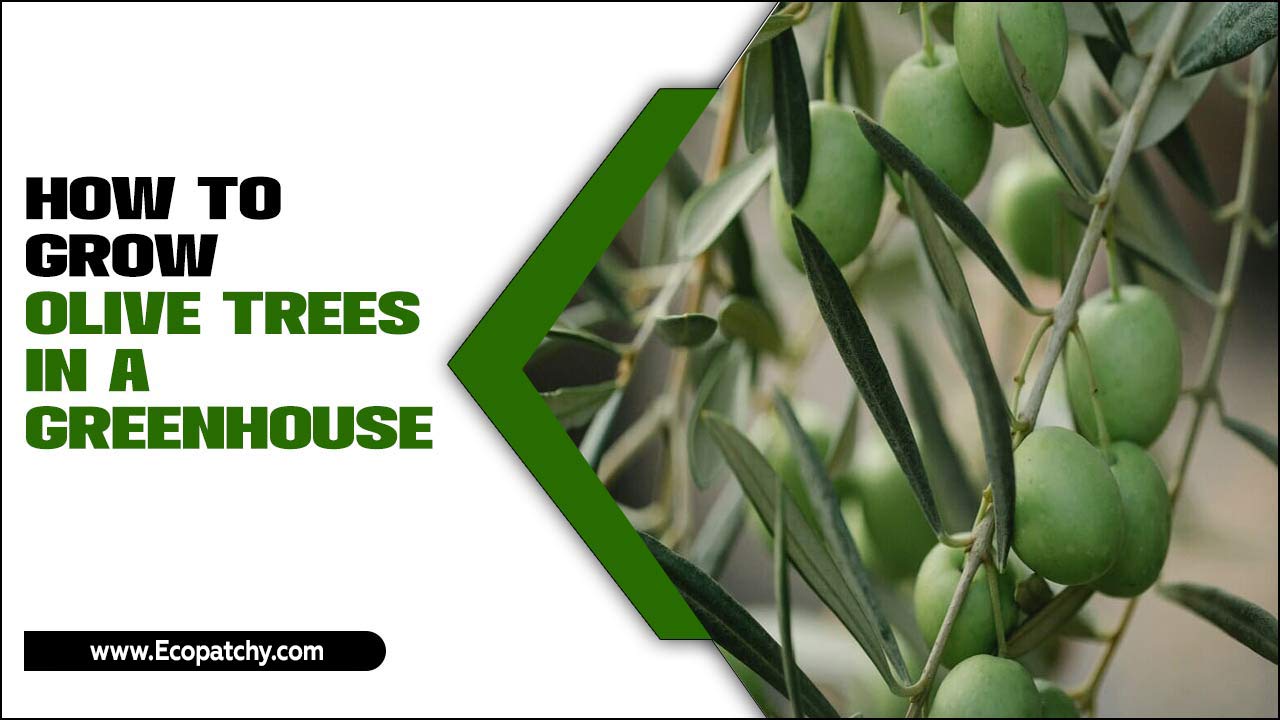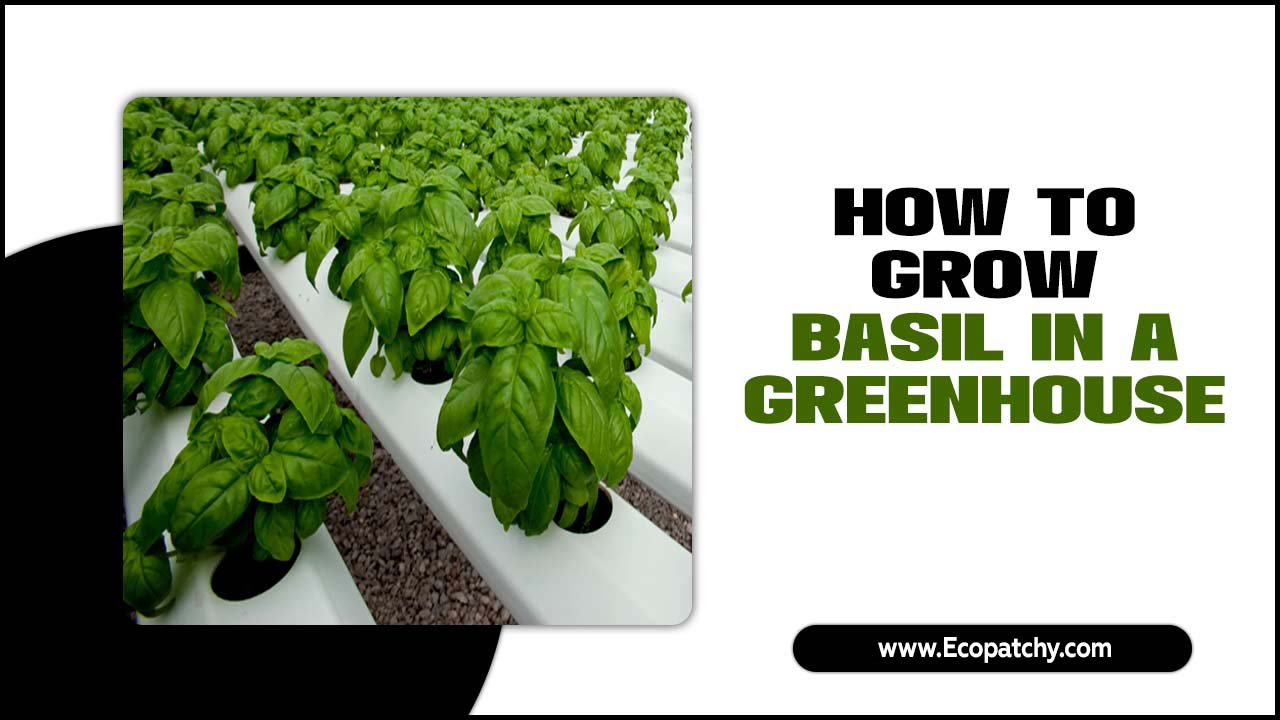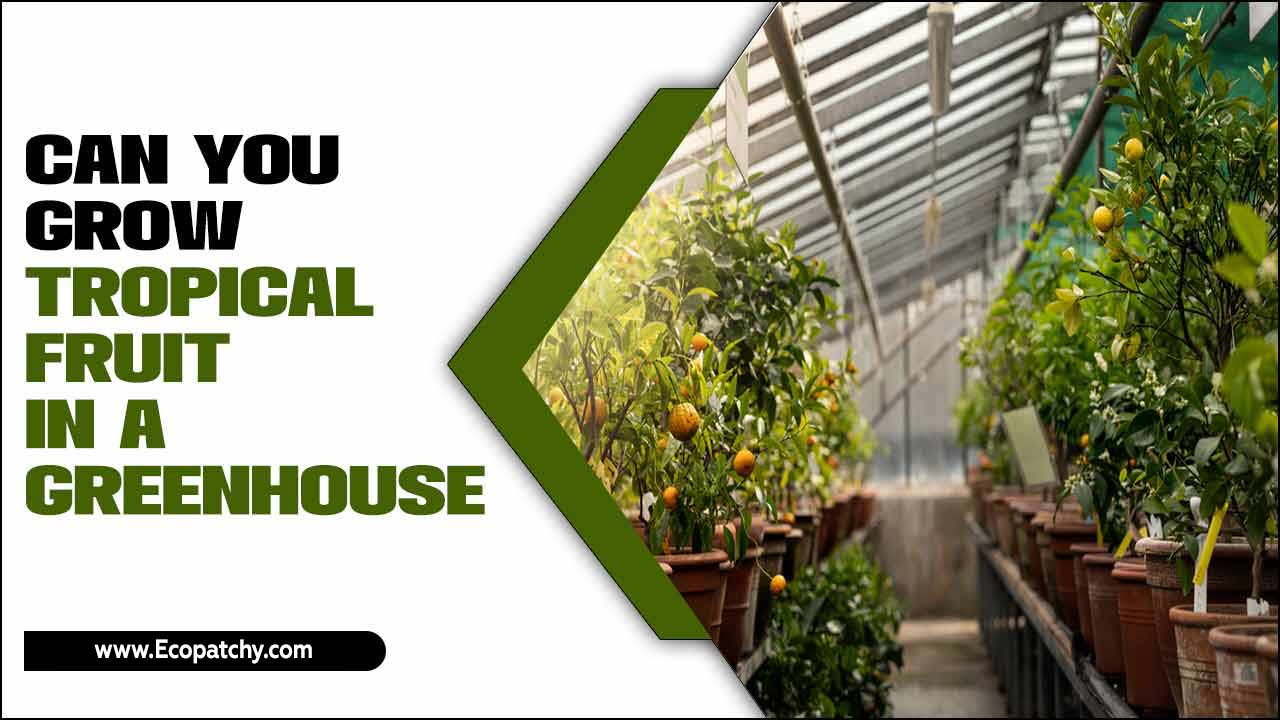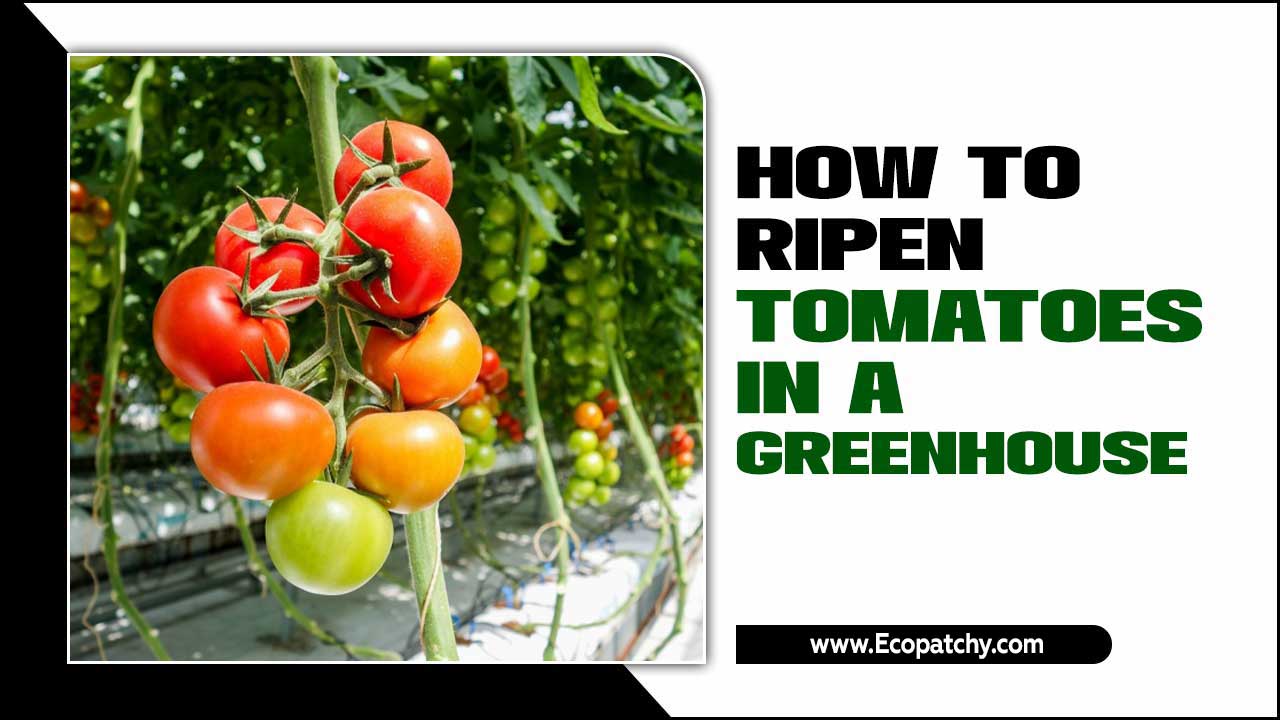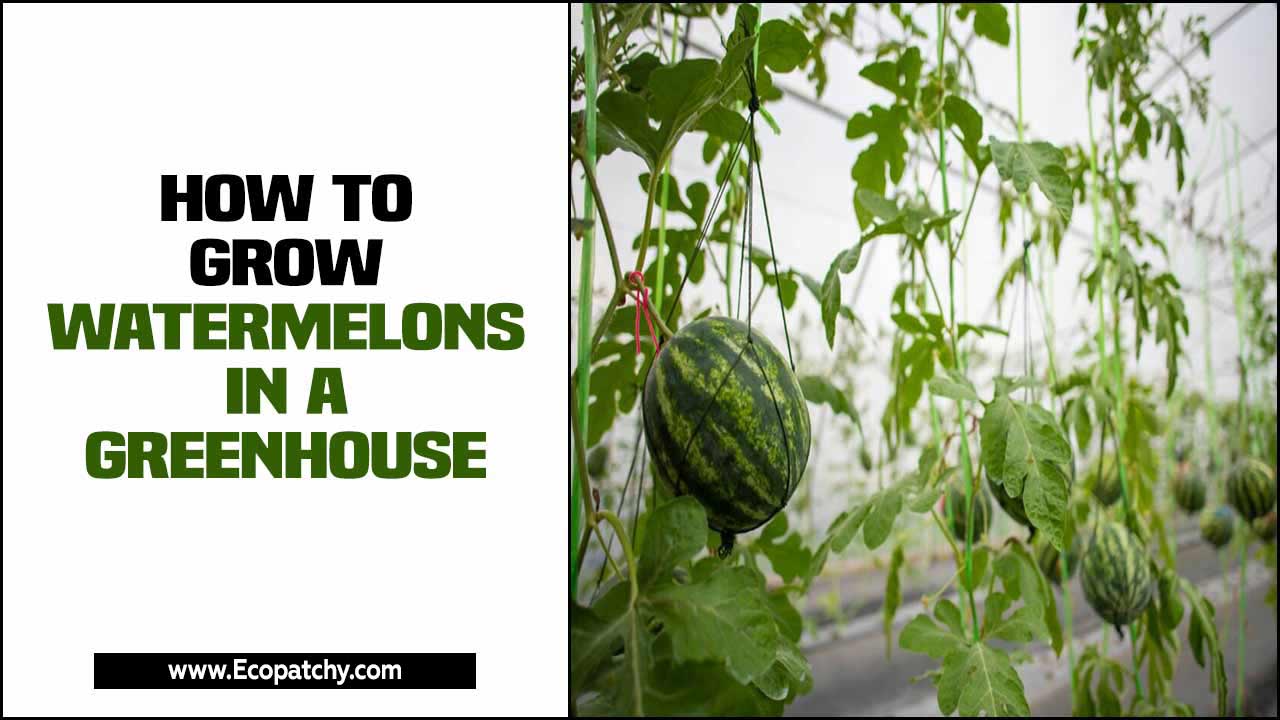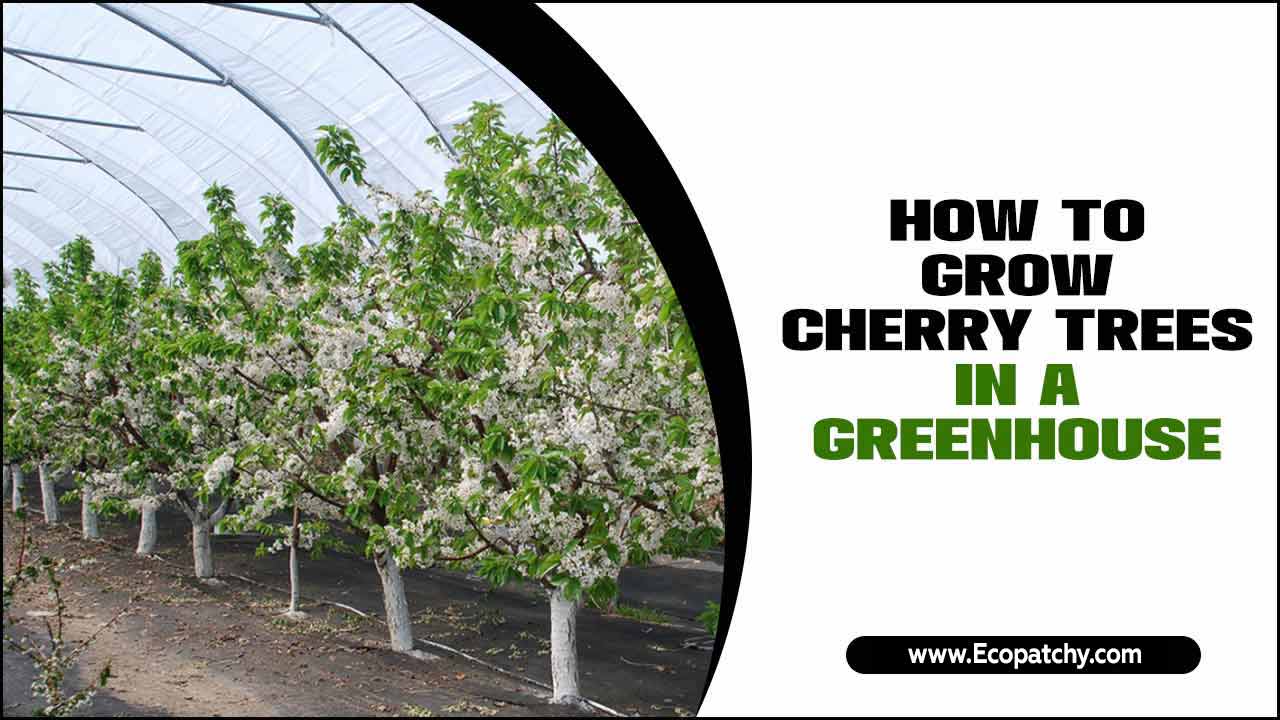Growing fresh, juicy tomatoes year-round is a dream for many gardening enthusiasts. However, this dream may seem out of reach with unpredictable weather patterns and limited outdoor growing seasons.
That’s where greenhouses come in. These controlled environments allow for year-round gardening and the possibility of growing certain plants, such as tomatoes, outside their typical growing season. Here we will cover everything about how can you grow tomatoes all year round in a greenhouse.
We will also provide a step-by-step guide on how to grow tomatoes all year round in a greenhouse. Additionally, we will discuss the benefits of growing tomatoes in a greenhouse, common challenges and troubleshooting tips for year-round tomato production, tips for maintaining optimal greenhouse conditions, and harvesting and storage considerations for greenhouse-grown tomatoes.
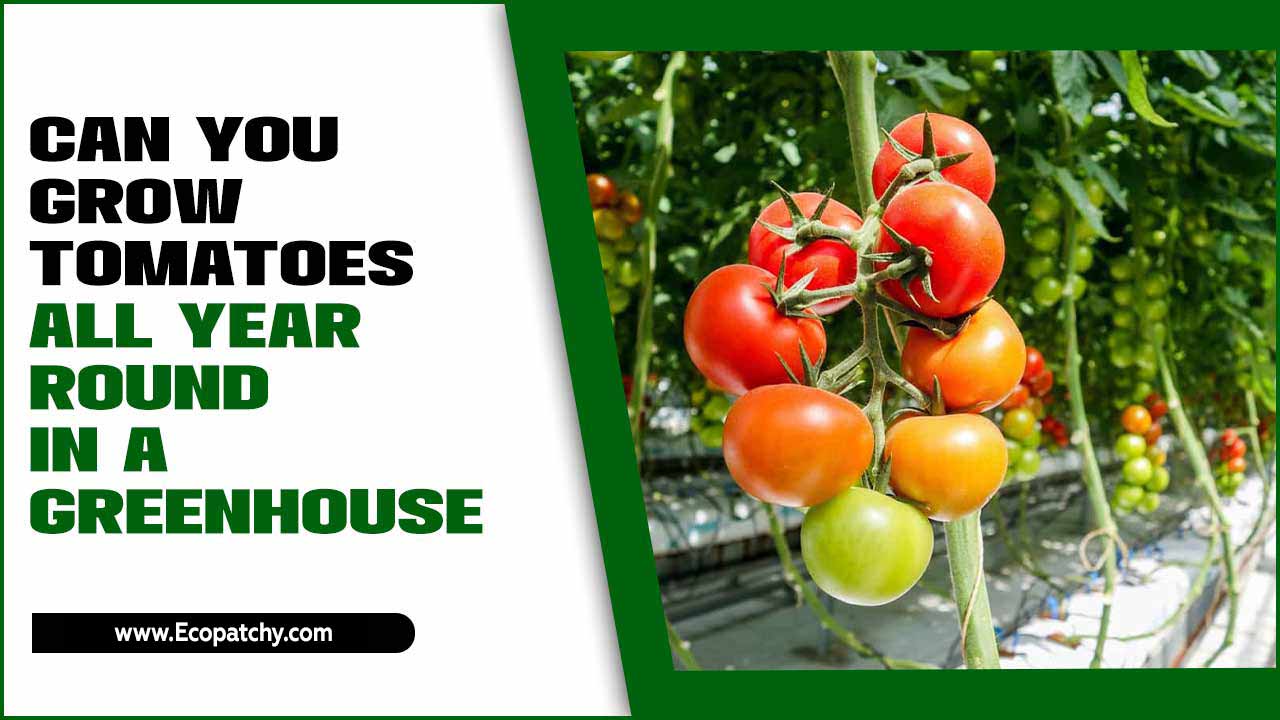
Why Tomatoes Are Ideal For Greenhouse Cultivation
Tomatoes are an ideal choice for greenhouse cultivation because they thrive in warm temperatures and humidity. Greenhouses provide the perfect controlled environment for tomatoes, protecting them from frost, pests, and extreme weather conditions that can harm their growth.
Greenhouses’ extended growing season allows for year-round tomato production, ensuring a consistent and abundant harvest. Gardeners can optimize growing conditions in greenhouses, resulting in higher yields of flavorful, high-quality tomatoes. Compared to field tomatoes, greenhouse-grown tomatoes tend to have better flavor, texture, and appearance.
Their controlled environment also allows for the implementation of techniques such as trellising and staking for optimal plant support. With the right care and attention, greenhouse-grown tomatoes can be heavy feeders, rewarding gardeners with bountiful harvests throughout the year.
How Can You Grow Tomatoes All Year Round In A Greenhouse – Simple 10 Step
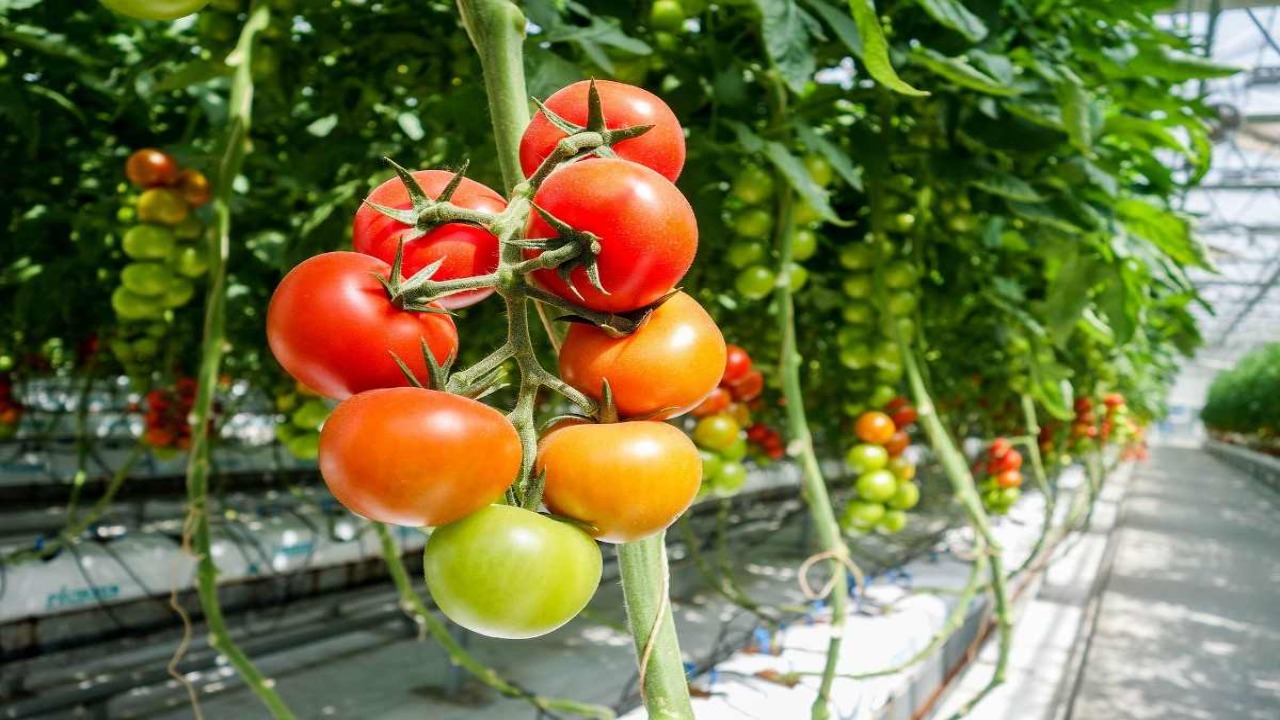
Yes, you can grow tomatoes all year round in a greenhouse. Greenhouses provide a controlled environment with consistent temperature and humidity levels, allowing tomatoes to thrive regardless of the season. You can enjoy fresh and delicious tomatoes throughout the year with proper care and attention to lighting, watering, and fertilizing. Here is a step-by-step guide on how can you grow tomatoes all year round in a greenhouse:
Step 1: Choosing The Right Variety
Choosing the right variety of tomatoes is an important step in growing them all year round in a greenhouse. There are many different types of tomatoes to choose from, including determinate and indeterminate varieties. Determinate varieties are compact and bushy, making them suitable for smaller greenhouses or containers.
Indeterminate varieties, on the other hand, are vining and can grow quite tall so they may require additional support in larger greenhouses. In addition to considering the size of the plants, you should also think about the flavor and color of the tomatoes you want to grow. Some popular greenhouse tomato varieties include ‘Sungold’ for its sweet flavor and ‘Beefmaster’ for its large, meaty fruits.
Step 2: Preparing The Soil
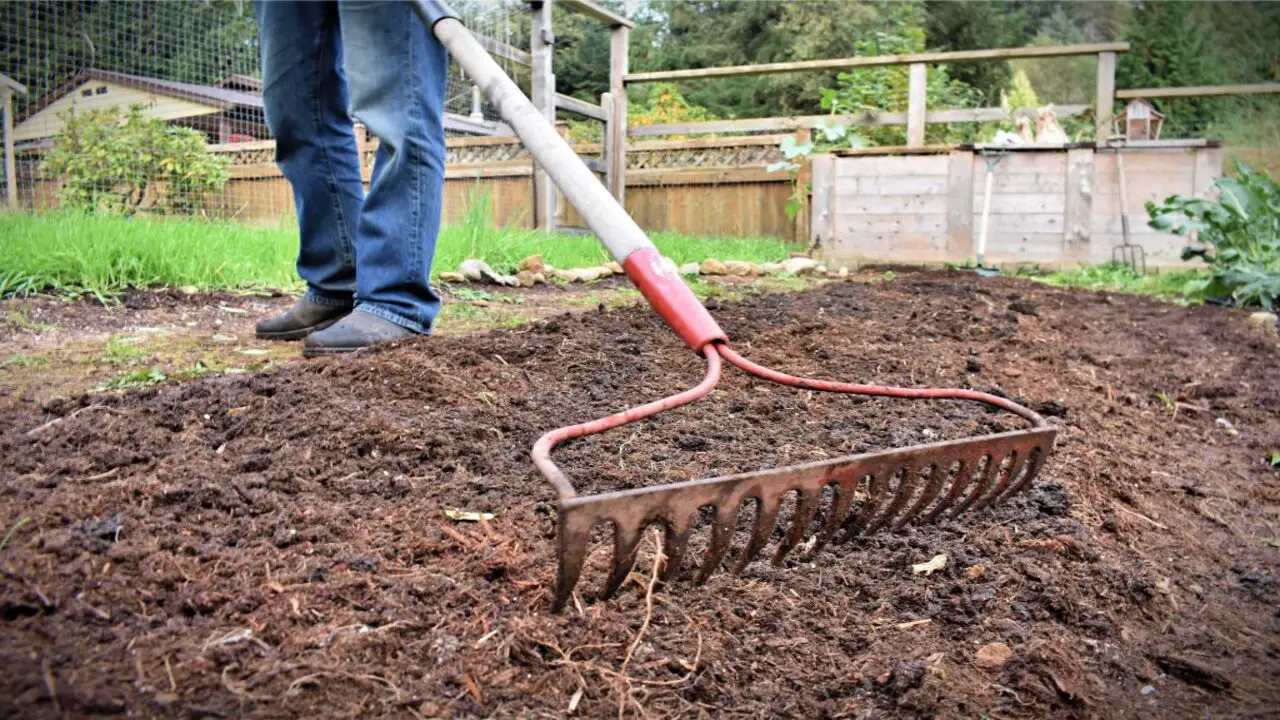
To ensure optimal tomato plant growth in a greenhouse, preparing well-draining soil rich in organic matter is essential. This will provide the necessary nutrients for the plants. Consider adding vermiculite or perlite to improve soil drainage and aeration in greenhouse tomato beds.
This will prevent waterlogging and promote healthy root development. Testing the soil pH and adjusting it if necessary is also important. Tomatoes prefer a slightly acidic to neutral pH range for optimal growth.
Additionally, amending the soil with nitrogen-rich organic fertilizers will promote healthy foliage and overall plant growth. Also, regularly monitor soil moisture levels to ensure the tomatoes receive adequate water without becoming waterlogged.
Step 3: Installing The Greenhouse

Installing a greenhouse is an essential step in growing tomatoes all year round. When choosing a location for your greenhouse, it is important to consider factors such as sunlight exposure, wind protection, and accessibility to water and electricity.
Once you have selected the ideal location, you can begin the installation process. Start by clearing the area of any debris or vegetation and leveling the ground. Next, assemble the greenhouse frame according to the manufacturer’s instructions. This may involve connecting poles, beams, and supports to create the structure.
Once the frame is assembled, secure it to the ground using anchors or stakes to ensure stability. Finally, cover the frame with greenhouse plastic or glass panels, leaving openings for ventilation and access.
Step 4: Controlling Temperature And Humidity
Maintaining optimal temperature and humidity levels is crucial for year-round tomato production in a greenhouse. To regulate temperature, utilize heating and cooling systems that prevent extremes and create a favorable environment for tomato growth.
Monitoring temperature regularly allows for necessary adjustments to ensure an ideal range. Similarly, controlling humidity is essential to avoid disease and fruit quality issues.
High humidity can lead to the growth of pathogens like aphids, whereas low humidity can cause problems with fruit development. Regular monitoring and adjustment of humidity levels will promote healthy tomato plants. Maintaining the right temperature and humidity can create a conducive environment for tomato growth and maximize your yield.
Step 5: Maintaining Proper Watering
Proper watering is crucial for the growth and health of tomatoes in a greenhouse. These plants are heavy feeders requiring consistent watering to prevent stress and promote optimal growth. However, it is important to avoid overwatering, as this can lead to root rot and other issues.
Consider using a drip irrigation system or watering cans to ensure even water distribution. Monitoring the moisture levels in the soil is essential, as it helps determine when to water and when to hold back. Adjust your watering schedule accordingly based on the needs of the plants. Additionally, using a fertilizer designed for tomatoes can provide them with the nutrients necessary for healthy growth.
Step 6: Maximizing Sunlight

To maximize sunlight in your greenhouse, it is essential to position it in a way that allows for maximum sun exposure throughout the year. This will ensure optimal growth and yield of your tomato plants. Consider using reflective surfaces or mirrors to redirect sunlight into shaded areas of the greenhouse, allowing all parts of the plants to receive adequate light.
Additionally, during the summer, use shade cloths or screens to regulate excessive sunlight and prevent plant damage. In the darker winter months, installing supplemental lighting can provide additional light when natural sunlight is limited. Lastly, regularly cleaning the windows and panels of your greenhouse will ensure maximum light penetration and enhance the overall efficiency of your growing environment.
Step 7: Pruning And Training
Pruning and training are essential steps in growing tomatoes all year round in a greenhouse. Pruning involves removing excess foliage and side shoots to promote airflow and prevent overcrowding. This helps to reduce the risk of diseases and allows the plants to focus their energy on fruit production.
On the other hand, training involves tying the tomato plant’s main stem to a support system, such as trellis or stakes. This helps to keep the plants upright and ensures that they grow vertically, maximizing space in the greenhouse. Training also helps expose the leaves to more sunlight, which is crucial for photosynthesis and optimal fruit development.
Step 8: Fertilizing And Feeding
Properly fertilizing and feeding your tomato plants ensures healthy growth and a bountiful harvest. Tomatoes are heavy feeders, meaning they require regular nutrients to thrive. Before planting your tomatoes, prepare the soil with organic matter, such as compost or well-rotted manure.
This will provide a good foundation of nutrients for the plants. Once your tomatoes are established, you can begin fertilizing them. Use a balanced organic fertilizer that is specifically formulated for tomatoes, following the instructions on the package for application rates.
Feeding your tomato plants regularly throughout the growing season is important, typically every 2-3 weeks. This will help replenish the soil’s nutrients and promote vigorous growth. Additionally, consider using organic supplements like fish emulsion or seaweed extract to provide extra micronutrients and boost plant health.
Step 9: Pest And Disease Management
When growing tomatoes all year round in a greenhouse, it is important to effectively manage pests and diseases to ensure healthy plants and a bountiful harvest. By following these steps, you can effectively manage pests and diseases in your greenhouse and enjoy a successful year-round tomato harvest. Here are some steps to help you with pest and disease management:
- Monitor Your Plants Regularly: Regularly inspect your tomato plants for any signs of pests or diseases. Look for chewed leaves, discoloured spots, or wilting foliage.
- Use Organic Pest Control Methods: Consider using organic pest control methods such as introducing beneficial insects like ladybugs, lacewings, or natural sprays made from ingredients like neem oil or garlic.
- Practice Good Sanitation: Keep your greenhouse clean and tidy by removing any fallen leaves or debris that can harbor pests or diseases. This can help prevent infestations from spreading.
- Rotate Crops: Avoid planting tomatoes in the same spot year after year, as this can lead to a buildup of pests and diseases in the soil. Rotate your crops to different areas of the greenhouse to minimize these risks.
- Water Properly: Overwatering can create conditions favourable for fungal diseases, so make sure to water your tomato plants at their base rather than over the foliage. Additionally, avoid watering in the evening, as this can promote fungal growth.
Step 10: Harvesting And Storing
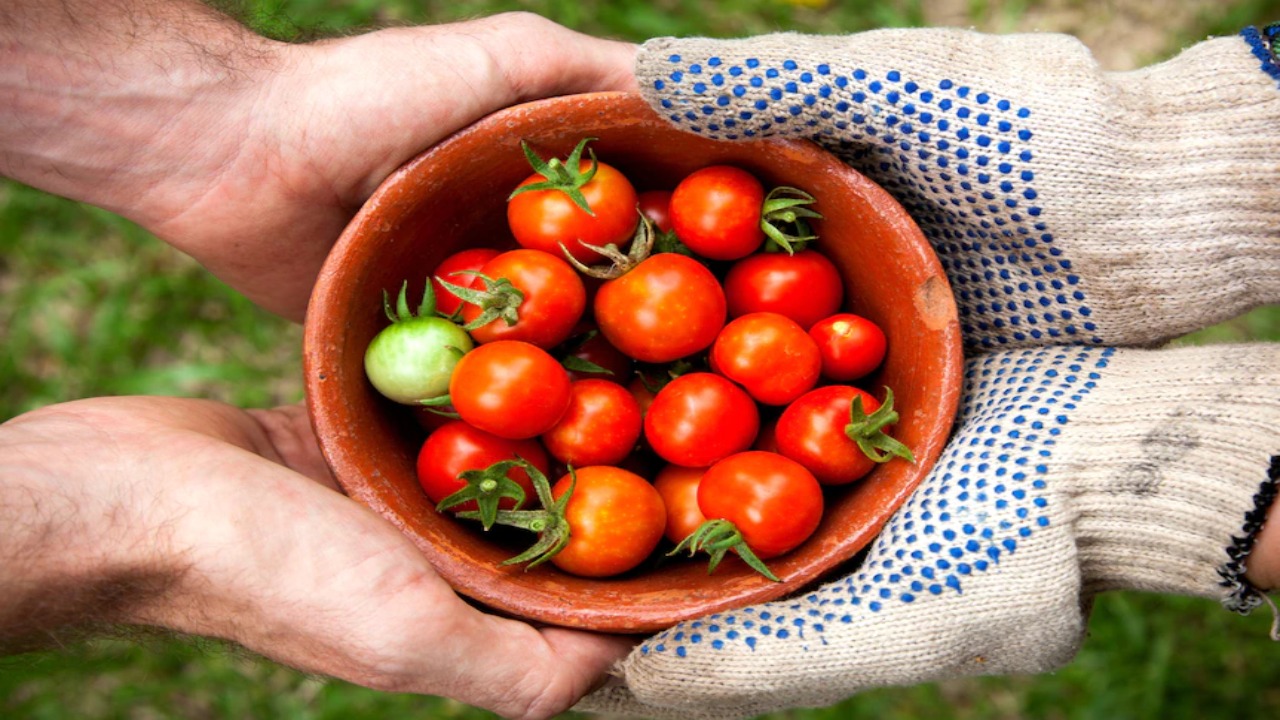
Harvesting and storing tomatoes properly is crucial if you want to enjoy them all year round. When it comes to harvesting, it’s important to wait until the tomatoes are fully ripe before picking them. This ensures that they will have the best flavor and texture. To harvest, gently twist or cut the tomato from the vine, careful not to damage the plant.
Once harvested, it’s important to store your tomatoes correctly to prolong their shelf life. Avoid refrigerating them, as this can cause them to lose flavor and become mealy. Instead, store them at room temperature in a cool, dry place away from direct sunlight. If you have an abundance of tomatoes, consider canning or freezing them for long-term storage.
Selecting The Right Type Of Tomatoes For Greenhouse Cultivation
Selecting the right type of tomatoes is crucial for growing tomatoes all year round in a greenhouse. Not all tomato varieties are well-suited for greenhouse cultivation, so choosing varieties that thrive in controlled environments is important. Here are some tips for selecting the right type of tomatoes for greenhouse cultivation:
- Look For Indeterminate Varieties: Indeterminate tomatoes are known for their continuous growth and fruit production, making them ideal for greenhouse cultivation where space may be limited.
- Consider Disease Resistance: Greenhouses can create a favorable environment for certain diseases, so choosing tomato varieties that are resistant to common greenhouse diseases, like powdery mildew and fusarium wilt, can help ensure successful cultivation.
- Choose High-Yielding Varieties: Since greenhouses provide optimal growing conditions, selecting tomato varieties that are known for their high yields can maximize your harvest.
- Consider Taste And Market Demand: Consider different tomato varieties’ taste and market demand. Some customers prefer sweet cherry tomatoes, while others look for larger beefsteak tomatoes.
The Benefits Of Growing Tomatoes In A Greenhouse
There are several benefits to growing tomatoes in a greenhouse, making it possible to enjoy fresh tomatoes all year round. Overall, growing tomatoes in a greenhouse offers numerous benefits, making it an attractive option for hobby gardeners and commercial growers. Whether you’re seeking an abundant harvest, Here are some key advantages:
- Extended Growing Season: Greenhouses provide a controlled environment that protects tomato plants from extreme weather conditions such as frost, excessive heat, or heavy rain. This allows for an extended growing season, ensuring a longer period of time to harvest ripe and flavorful tomatoes.
- Higher Yields: The controlled environment of a greenhouse allows for optimal growing conditions, including temperature, humidity, and light levels. As a result, tomato plants tend to produce higher yields than those grown outdoors. This means more juicy tomatoes for your salads, sauces, and other culinary creations.
- Protection From Pests And Diseases: Greenhouses are a physical barrier against pests and diseases that can damage tomato plants. By keeping unwanted insects and pathogens out, greenhouse-grown tomatoes are less susceptible to common pests like aphids or diseases like blight. This reduces the need for chemical pesticides or fungicides.
- Better Quality And Flavor: The consistent climate of a greenhouse promotes even growth and ripening of tomatoes, resulting in better quality fruits with superior flavor. The controlled environment also allows for better control over factors like irrigation and nutrient levels, further enhancing the taste and texture of the tomatoes.
- Year-Round Availability: One of the biggest advantages of growing tomatoes in a greenhouse is having fresh tomatoes available throughout the year. With careful planning and management, you can stagger plantings to ensure a continuous supply of homegrown tomatoes regardless of the season.
Factors To Consider When Choosing Tomato Varieties For A Greenhouse
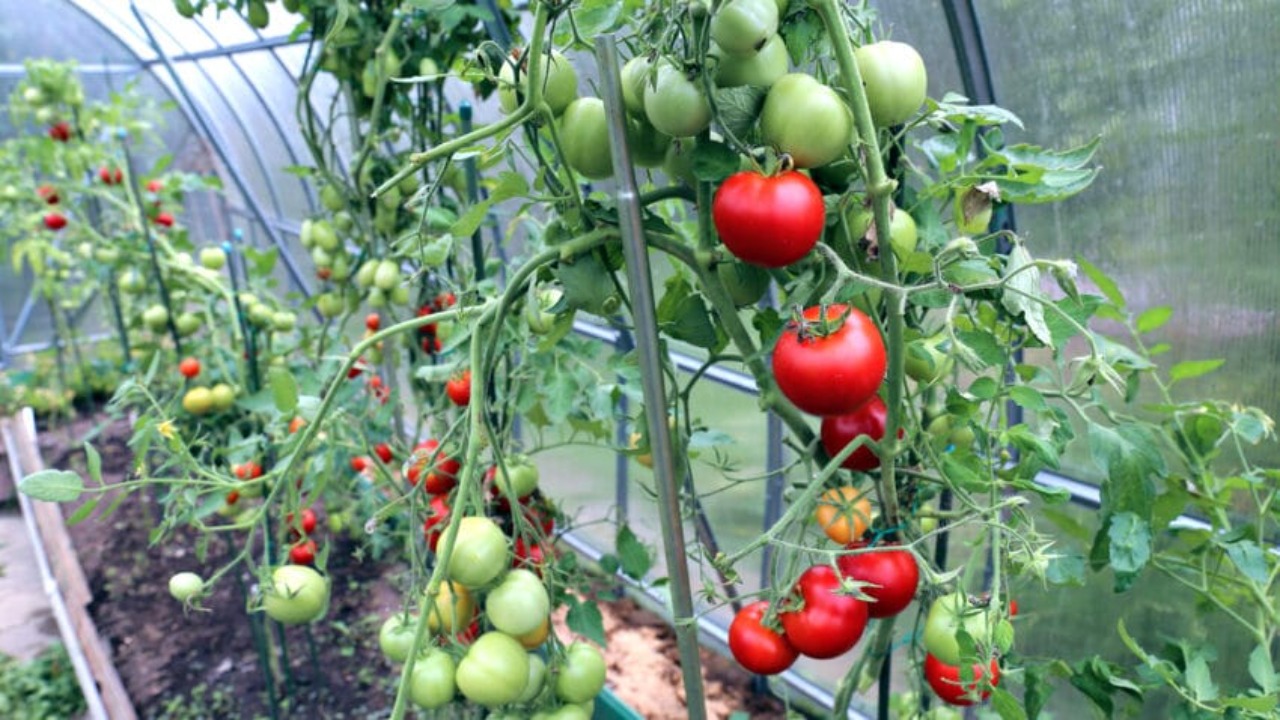
When growing tomatoes in a greenhouse, it is important to consider the specific varieties that are best suited for this environment. By considering these factors, you can choose tomato varieties that will thrive in your greenhouse environment and provide you with a bountiful harvest all year round. Here are some factors to consider when choosing tomato varieties for a greenhouse:
- Determinate Vs Indeterminate: Determinate varieties of tomatoes tend to be more compact and bushy, making them ideal for smaller greenhouse spaces. Indeterminate varieties, on the other hand, can grow tall and require trellising or support systems.
- Disease Resistance: Greenhouse environments can be prone to certain diseases, such as powdery mildew or leaf spot. Look for tomato varieties with good disease resistance to ensure healthy plants and a successful harvest.
- Fruit Size And Yield: Consider the size of the tomatoes you prefer and your desired yield. Some varieties produce large beefsteak tomatoes; others offer smaller cherry or grape-sized fruits.
- Growing Season: Determine whether you want early-maturing varieties that produce fruit quickly or if you prefer longer-maturing varieties that provide a continuous harvest over an extended period.
- Taste And Flavor: Lastly, don’t forget about taste! Different tomato varieties offer different flavors, from sweet and tangy to rich and savory. Consider your personal preferences when selecting tomato varieties for your greenhouse.
Harvesting And Storage Considerations For Greenhouse-Grown Tomatoes
Proper harvesting and storage considerations are essential for growing tomatoes all year round in a greenhouse. Following these tips ensures that your greenhouse-grown tomatoes stay fresh and flavorful for as long as possible. Here are some tips to help you make the most of your greenhouse-grown tomatoes:
- Harvest At The Right Time: Tomatoes should be fully ripe before harvesting, as they will not continue to ripen once picked. Look for firm fruits that have a slight give when gently squeezed. The color should be uniform and vibrant.
- Handle With Care: To avoid damaging the tomatoes, handle them gently when picking and transporting them from the greenhouse to your storage area.
- Store At The Right Temperature: Tomatoes should be stored at a cool room temperature, around 55 to 70 degrees Fahrenheit. Avoid storing them in direct sunlight or temperatures below 50 degrees, as this can affect their flavor and texture.
- Choose The Right Storage Method: There are several options for storing tomatoes, including on the countertop, in a paper bag, or in the refrigerator. Each method has its pros and cons, so choose one that suits your preferences and needs.
Conclusion
Growing tomatoes all year round in a greenhouse is an excellent option for those who want to enjoy fresh and delicious tomatoes regardless of the season. You can ensure a successful year-round harvest by understanding the tomato plant’s growth cycle, selecting the right variety, and providing optimal greenhouse conditions. Additionally, greenhouse cultivation offers several benefits, including protection from pests and diseases, controlled temperature and humidity levels, and maximized sunlight exposure.
However, it is important to consider factors such as proper soil preparation, watering, pruning, and pest management to maintain healthy tomato plants. With the right techniques and care, you can enjoy a bountiful harvest of tomatoes throughout the year. So it is essential to know if can you grow tomatoes all year round in a greenhouse.
Frequently Asked Questions
1.Can Tomatoes Truly Thrive In The Greenhouse During Winter?
Ans: Yes, tomatoes can thrive in a greenhouse during winter. The controlled environment helps maintain optimal conditions for growth. Additional heating and lighting may be needed in colder months. Choosing the right tomato variety and appropriately planting contribute to successful greenhouse cultivation.
2.What Temp Can Tomatoes Tolerate In Greenhouse?
Ans: Tomatoes can tolerate temperatures ranging from 60 to 85°F in a greenhouse. However, temperatures exceeding 85°F can negatively affect fruit quality and lead to blossom drop. Maintaining proper ventilation and shading in the greenhouse is crucial to regulate temperature. Using a thermometer or climate control system helps monitor and adjust the temperature for optimal tomato growth.
3.Do Tomatoes Grow Well In Greenhouses?
Ans: Tomatoes thrive in greenhouses, benefiting from the controlled environment. They are less vulnerable to pests and diseases and can be cultivated year-round regardless of weather conditions. Proper care is essential to ensure optimal growth and high yields.
4.How Do You Grow Tomatoes In A Greenhouse All Year?
Ans: To grow tomatoes in a greenhouse all year, select a variety suitable for greenhouse cultivation. Maintain consistent temperature, humidity, and light levels in the greenhouse to create an ideal growing environment. Use a well-draining soil mix and provide proper fertilization and watering. Regularly prune your tomato plants to enhance fruit quality and yield.
5.Is It Possible To Grow Tomatoes All Year Round In A Greenhouse?
Ans: Yes, you can grow tomatoes all year round in a greenhouse. You can achieve successful cultivation by providing the right conditions like light, temperature, and humidity control, along with choosing suitable tomato varieties. Regularly maintaining and monitoring the greenhouse environment are key to optimal tomato production.

